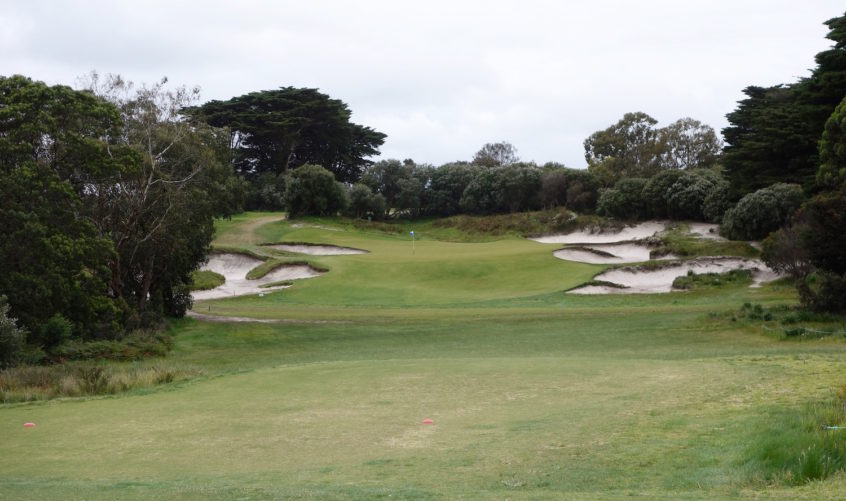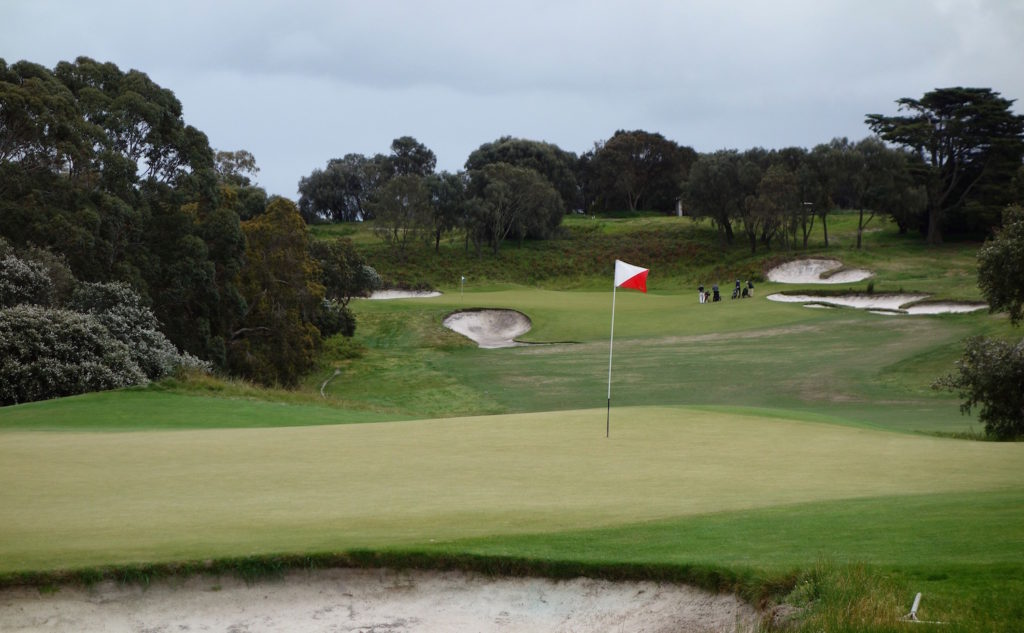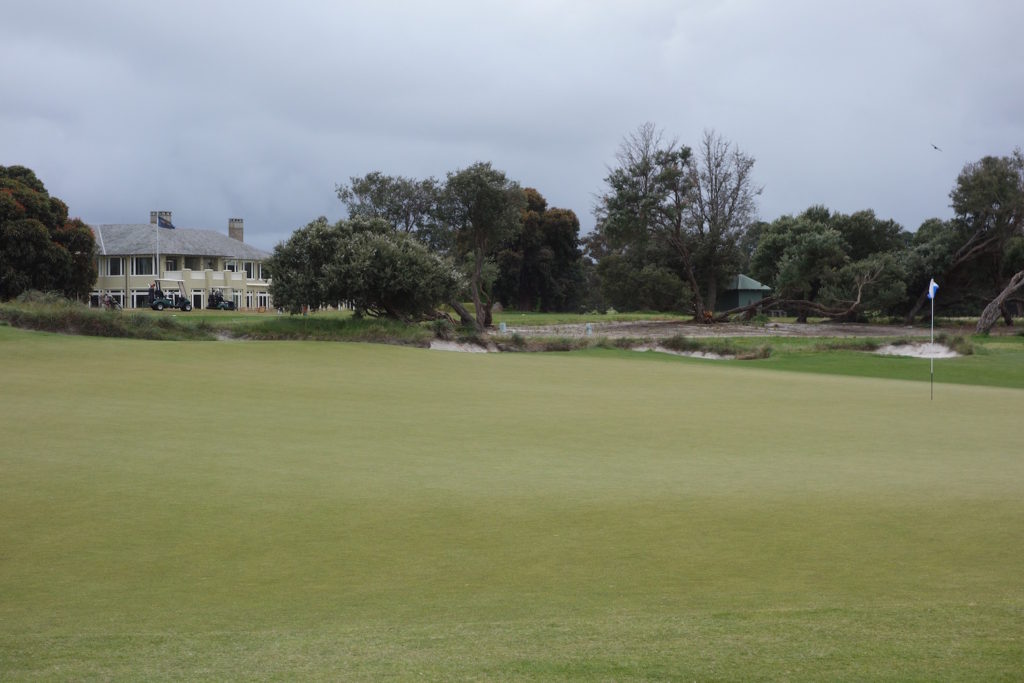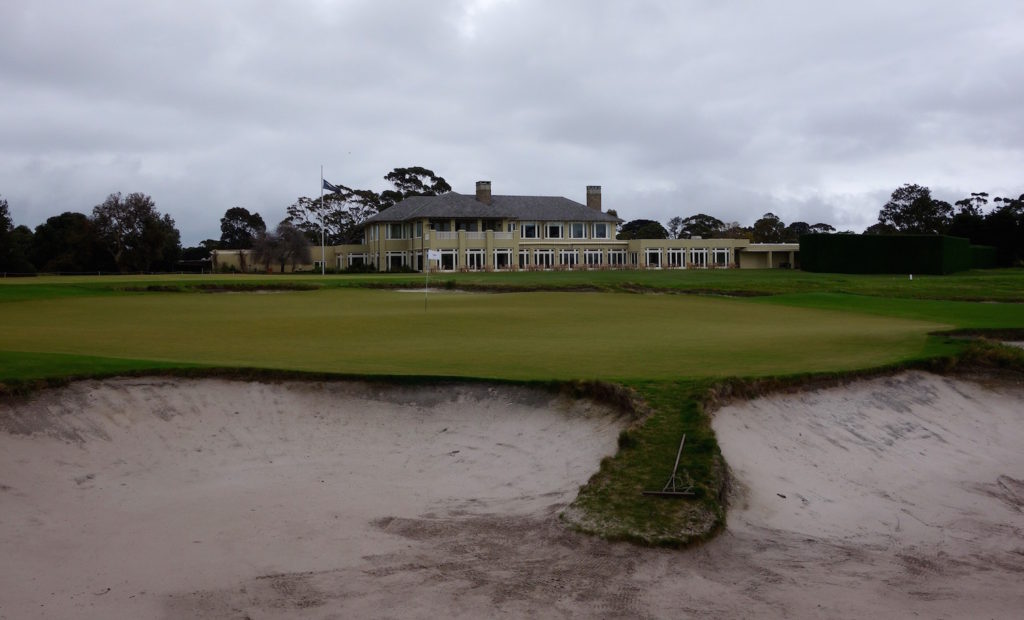Royal Melbourne is one of the foundational clubs in golf. Founded in 1891, it is Australia’s oldest continually existing golf club and due in part to that history, it’s the one club that every American visiting Australia wants to see.
My visit to Australia was in September, which is on the early side of the country’s golf season. We played 36 holes at Royal Melbourne on a chilly grey day and it couldn’t have been more enjoyable. I was hosted by a friend and Royal Melbourne members whose love for and pride in the club was contagious. While this review covers the history of the club and the West Course, I have a completely separate review of the East Course that covers more of my experience and Royal Melbourne’s tournament history.
Royal Melbourne History
The history of Melbourne’s Sandbelt courses is very interesting. Almost all of the courses in the Sandbelt weren’t founded in their current locations – Royal Melbourne is no exception.
The club was founded in 1891 on the “Caulfield” site and was given its royal status by Queen Victoria in 1895. The club then moved to its Sandringham site from 1901-1931. The next site, Black Rock, is the club’s current location and while the Sandringham location has a rich tournament history, the Black Rock site is where Royal Melbourne came into its own.
It wasn’t until 1926 that Alister MacKenzie visited Australia and drew plans for a new layout, which became Royal Melbourne’s West Course. It only took Mackenzie a few weeks to create an approved layout and he chose a local member named Alex Russell to oversee the work and be his Australian design partner. The club’s head greenskeeper named M.A. Morcom built the course and also went on to build the East Course and Kingston Heath. Before MacKenzie left Melbourne after his relatively short visit, he showed Russell, Morcom, and their team how to build his style of greens and bunkers.
Alex Russell went on to be the course architect for Royal Melbourne’s East Course.
What are Consulting Architects?
Another interesting aspect of the Sandbelt clubs is their use of a “consulting architect.”
Where America and the UK’s ancient courses may undergo major renovations once every few decades, nearly all of the Sandbelt clubs have a “consulting architect” to continually oversee and suggest changes over time. Bunkers get moved, greens get re-contoured or enlarged, but I rarely heard about one of the major courses undergoing a “back to dirt” renovation where the club was closed for months. It’s a different approach than many American courses where course closures are the norm during renovations. Tom Doak is the consulting architect at Royal Melbourne.
Australian clubs are also more open to the idea of 19th holes that are circulated in and out of play to both alleviate stress on certain holes or replace a hole that is under maintenance. During my round on the West Course, the 7th hole was closed for changes, so the par 3 19th hole was in play. It is a mid-length par 3 designed by Tom Doak that you’ll see below.
During my round at Kingston Heath, the 5th hole was out of play and a 19th hole designed by consulting architect Michael Clayton was used in its place.
You will also notice that I went crazy with my camera during the round. I hope you guys enjoy all of the photos!
Hole #1 – 429 yards – The opening hole is wide and straightforward except for the single bunker guarding the green. Once on the putting surface it’s clear where the challenge lies – the firm and fast putting surfaces.

Hole #2 – 491 yards – Players can carry the large right fairway bunker, leaving a slightly uphill approach to the green. This is the first taste of Sandbelt green complexes on the West.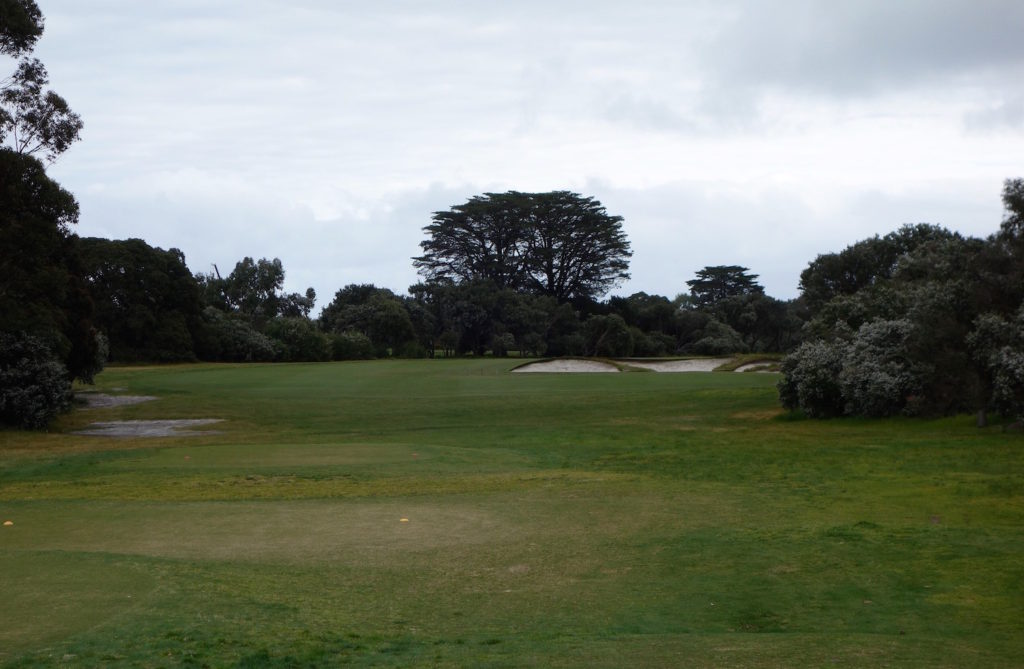
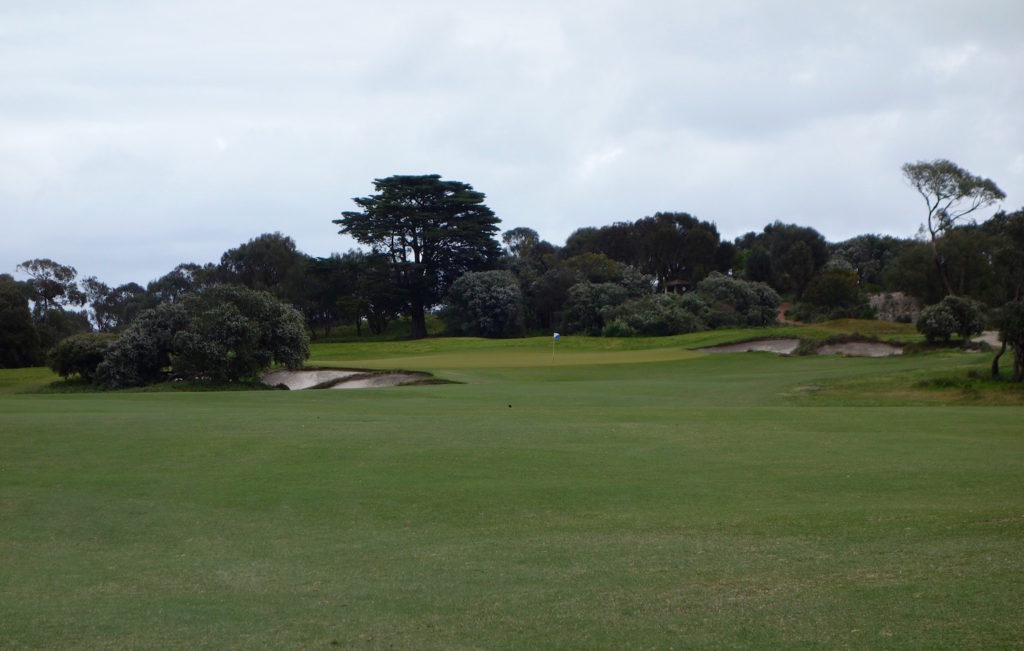

Hole #3 – 354 yards – It may look benign, but this was one of the toughest short par 4s that I’ve ever played. The hole is a dogleg left with a blind tee shot, but the real challenge lies in the approach. The shot has to carry the swale and bunkers in front of the green, but anything too deep runs through the back of the green. I hit a few wedges into this green and didn’t get a single ball within 30 feet!
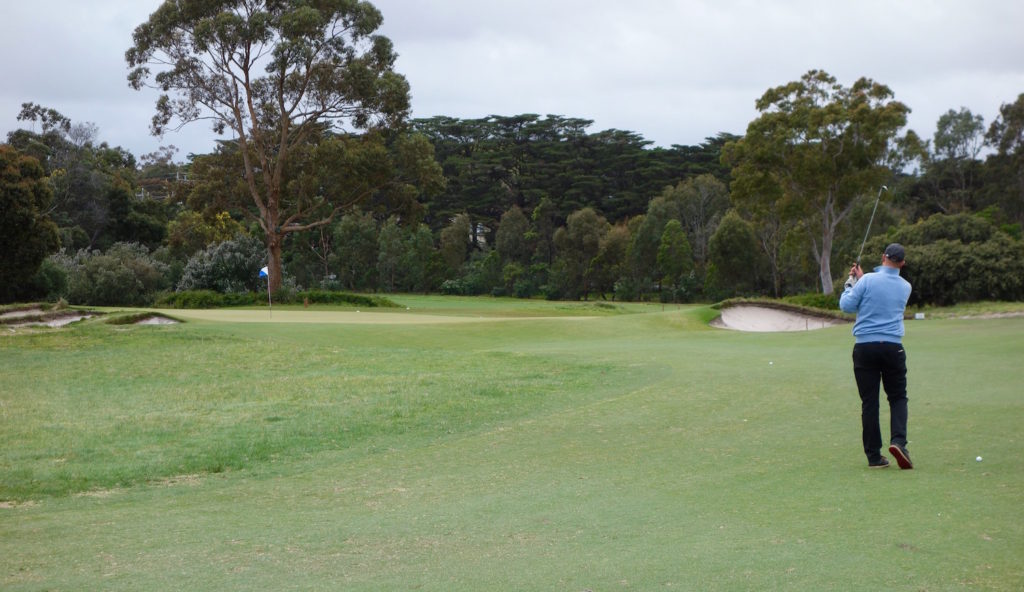

Hole #4 – 507 yards – Tee shots can be played either side of the fairway bunkers on this dogleg right, but players going for the green have to play up the right. The layup area is short of the three mowers you in the second photo below. The area short right of the green is filled with deep bunkers that swallow any over-cut second shots.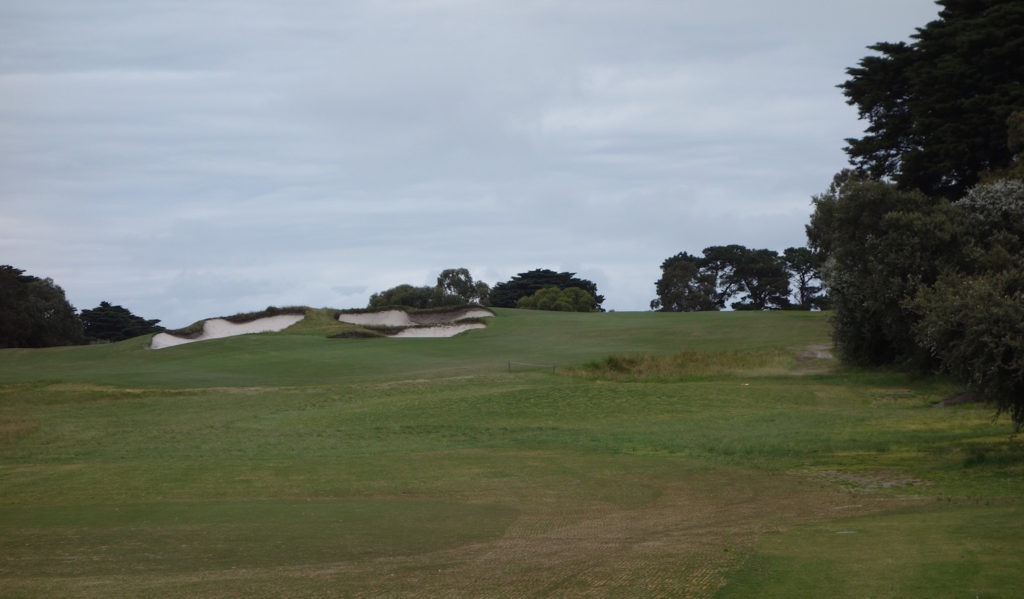
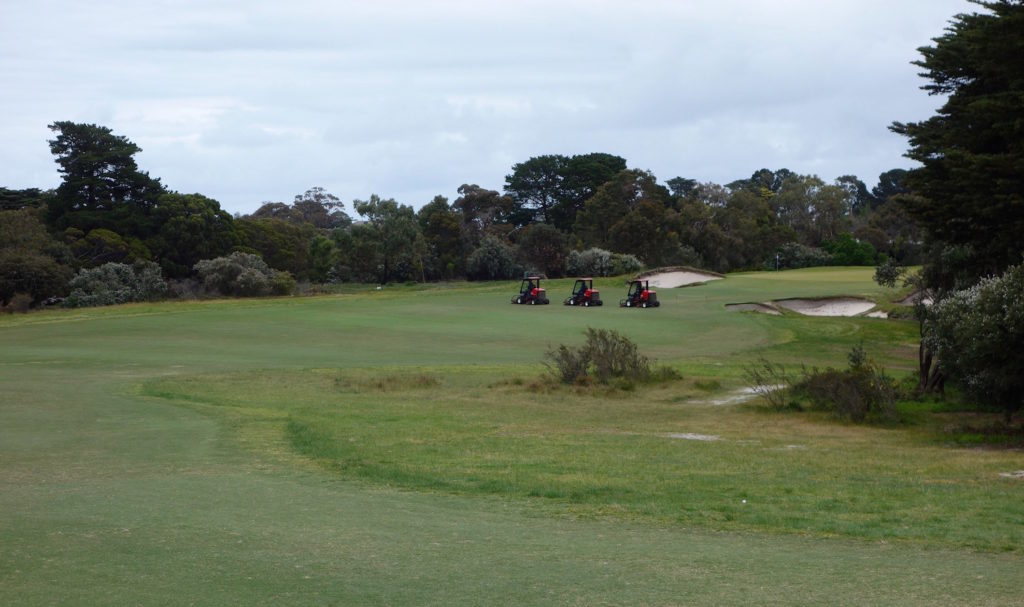
Hole # 5 – 176 yards – This hole is perfection. What else can I say? This is one of the best par threes in the world and the second photo below, taken from behind the green, shows its undulations best.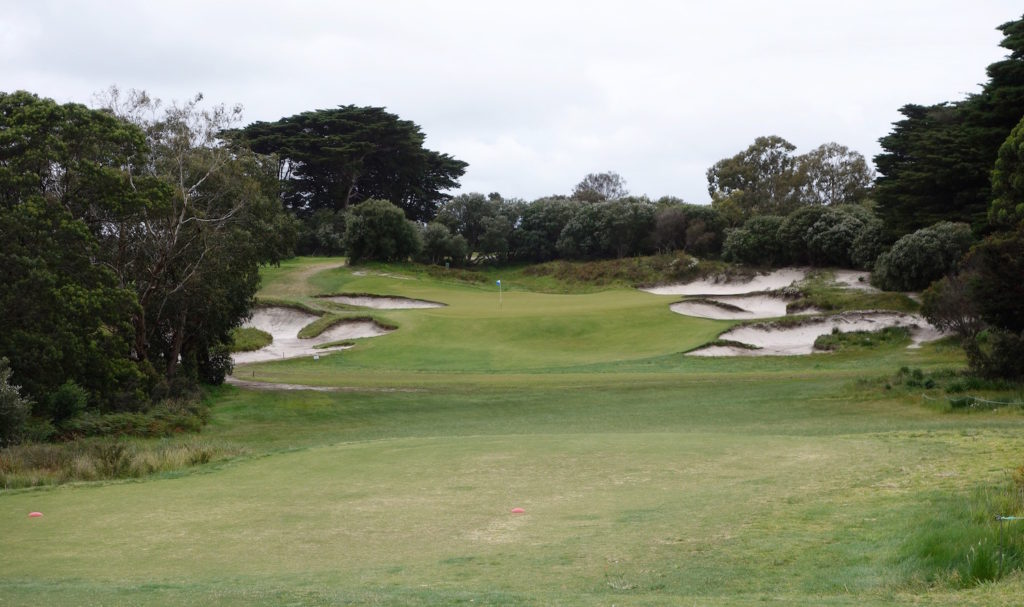
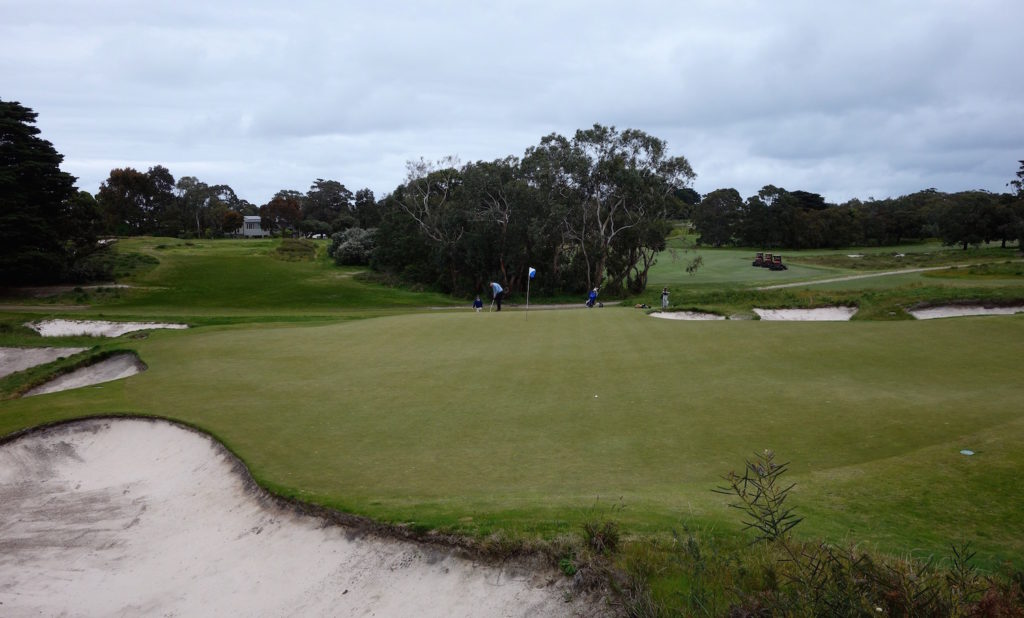
Hole #6 – 428 yards – This dogleg right (photo is taken from the “knee”) holds one of the hardest green on the course. It is very shallow, particularly on the left where you see the pin below. The right side isn’t any easier, where a ball hit above the hole is easily putted off the front of the green.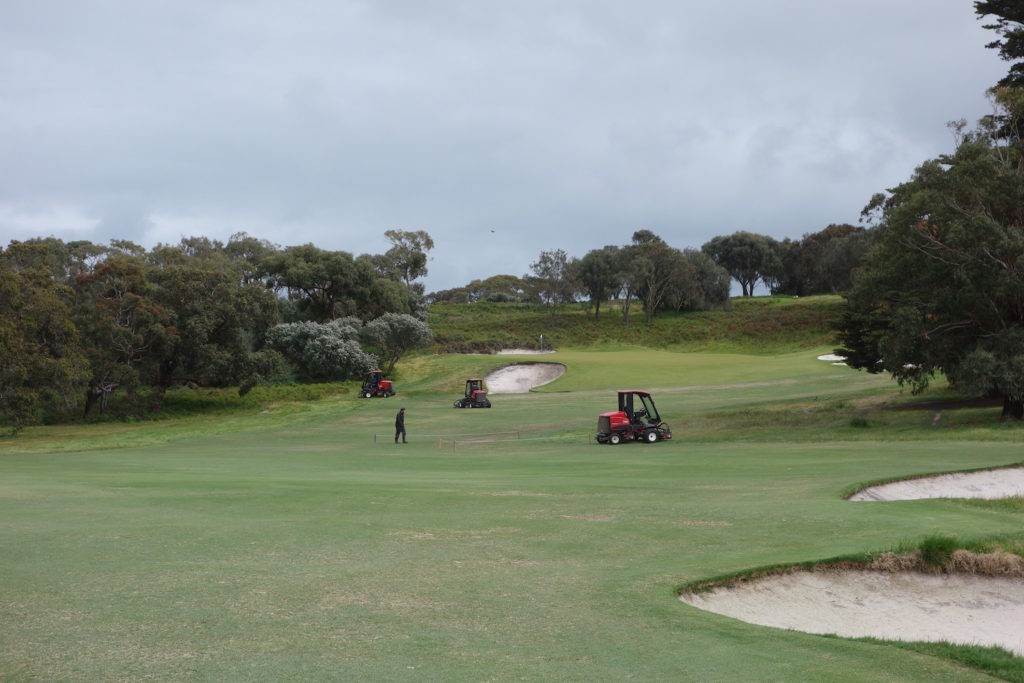
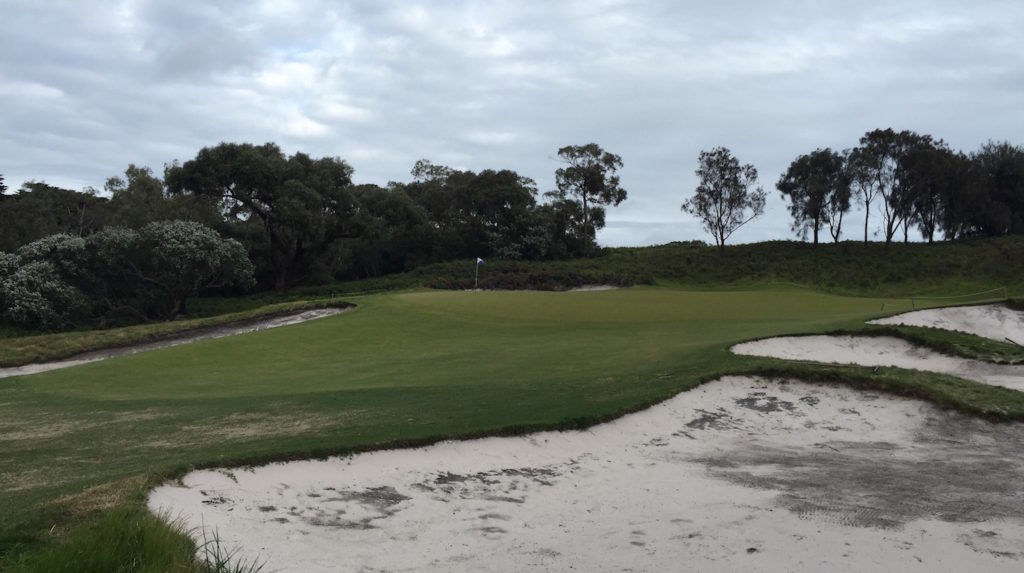
Hole #7 – 148 yards – The green on the uphill par 3 7th was being rebuilt during our round, so the hole was closed.
Hole #8 – 379 yards – The green you see on the left is the first hole of the East Course with 8 West green on the right. The three bunkers initially appear greenside, but they are actually well short.
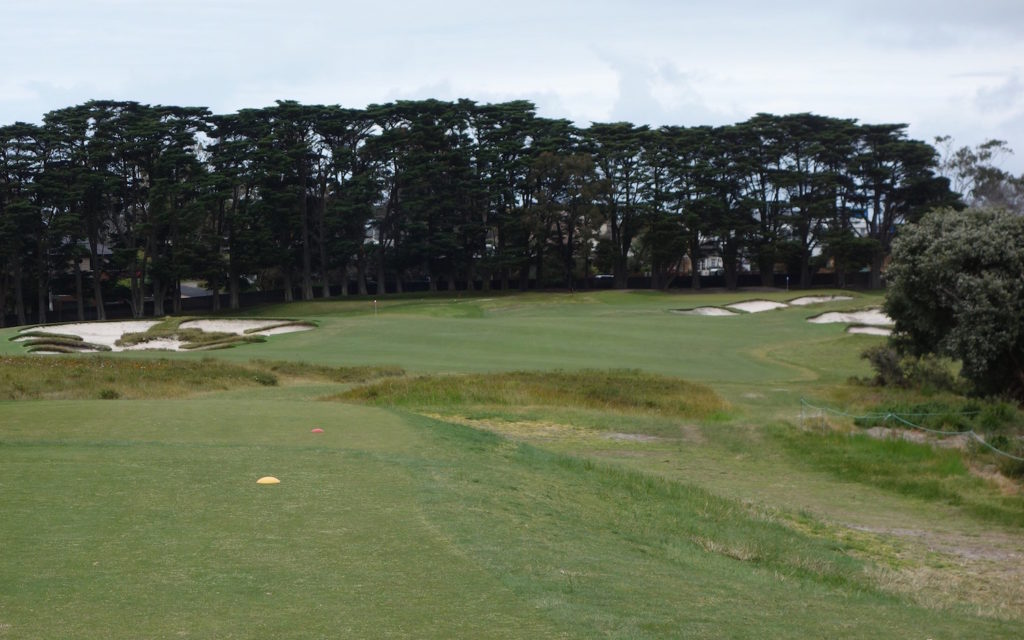
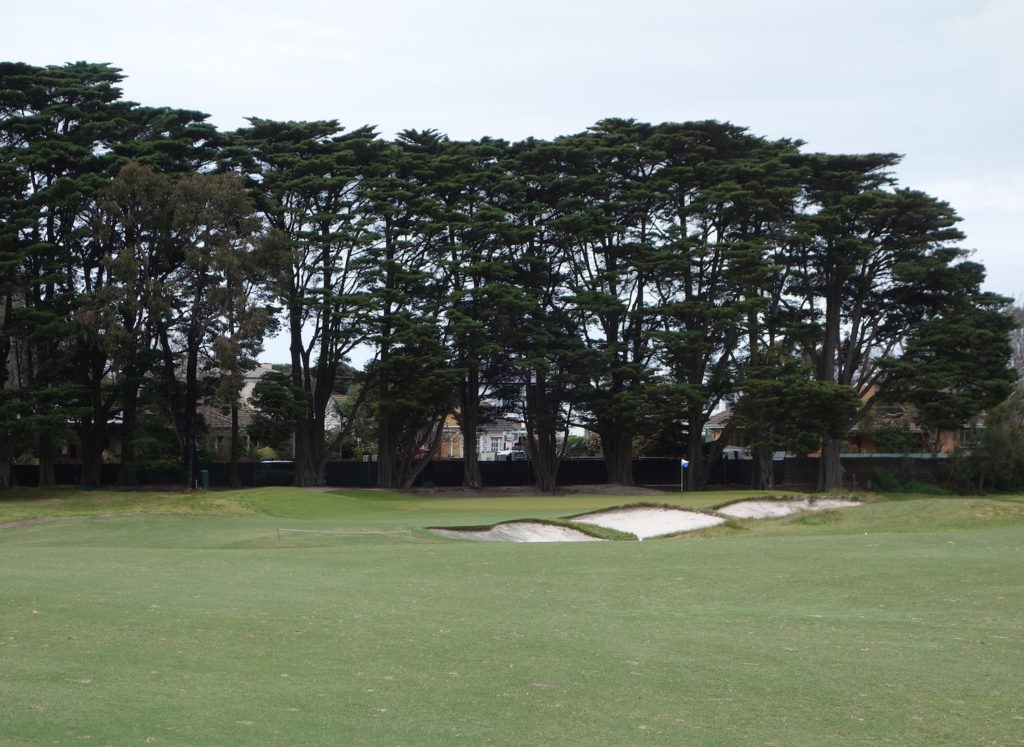
Hole #9 – 416 yards – The ideal drive is down the left, which opens the best angle into this spectacular green. This is another example of the quintessential Sandbelt green complex utilized on a perfect piece of Royal Melbourne land.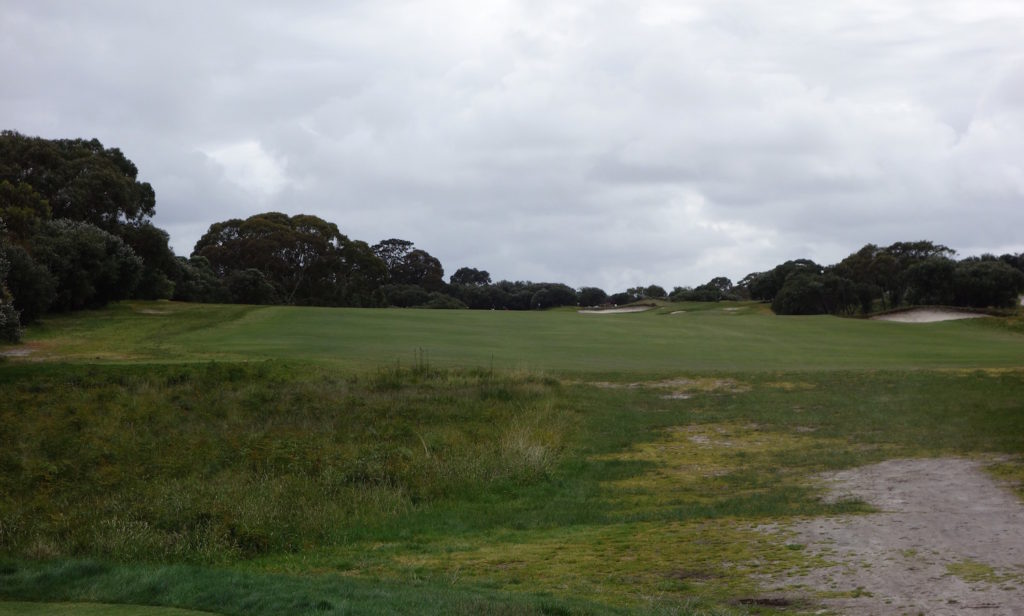
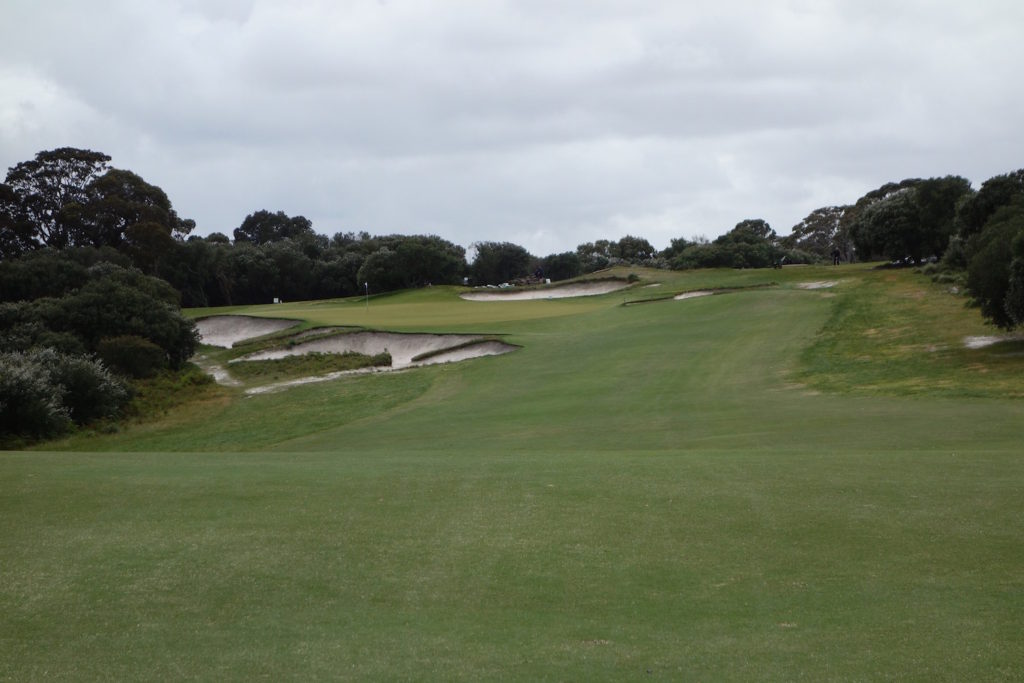
Hole #10 – 312 yards – The green is hidden behind the massive left bunker on this short par 4. Regardless of whether you go for the green or lay up, holding an approach shot on this tiny raised green is extremely tough. Anything short runs back off the front of the green while anything deep ends up in the rear bunkers.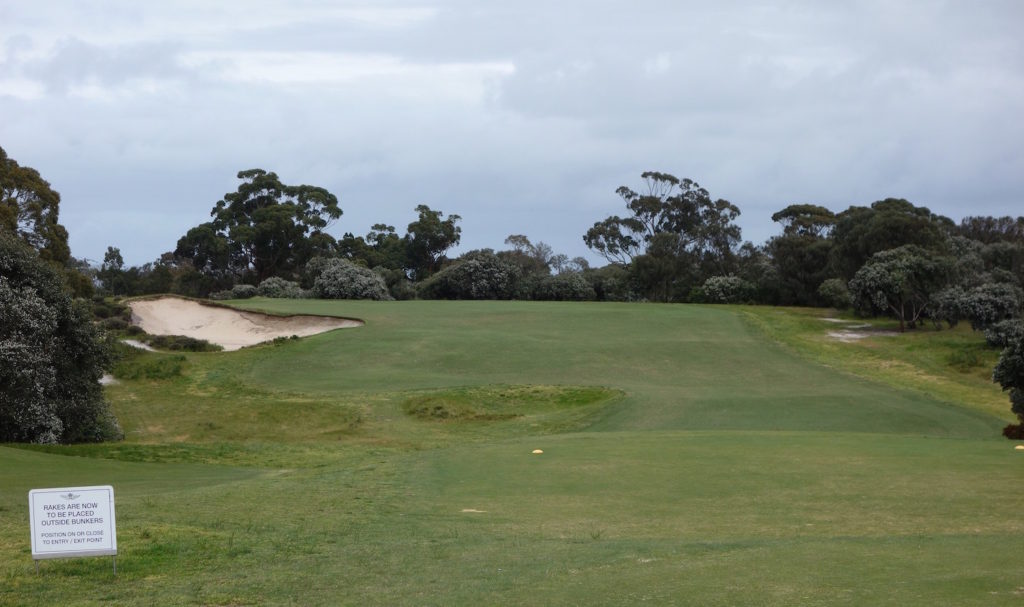
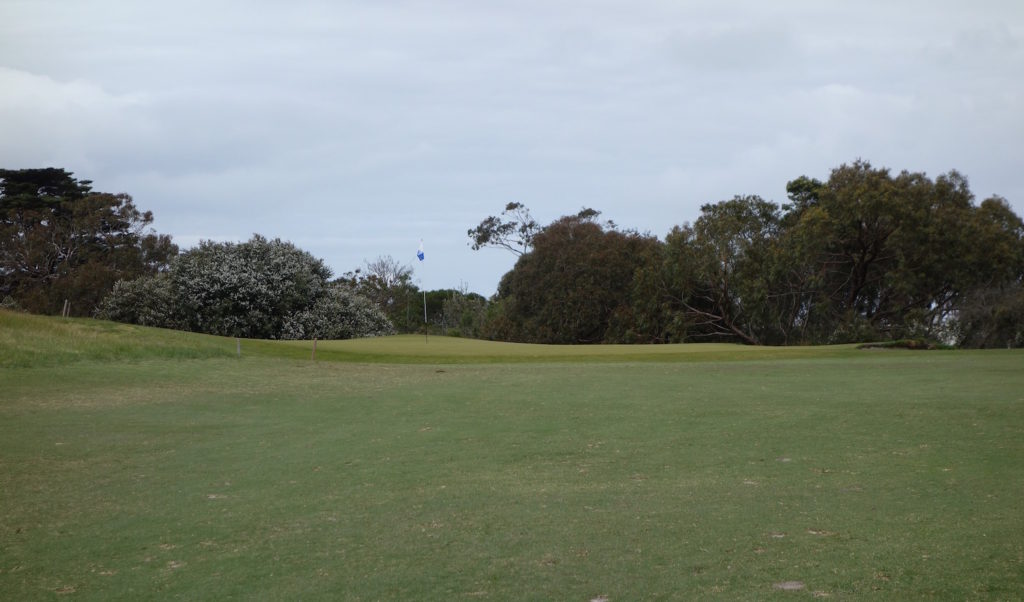

Hole #11 – 455 yards – This dogleg left starts downhill and sweeps up and left to the green. The long uphill approach to this green is a stretch for shorter hitters, but shots can run up the right side of this green where everything feeds back left.


Hole #12 – 476 yards – A short par 5 for members (and par 4 for pros), there is a small heathland bunkered area before the green. The large sloping green offers lots of pin options.

Hole #13 – 147 yards – The green on this short par 3 is raised in the middle and spills off toward the surrounding bunkers.
Hole #14 – 366 yards – Heathland defines the right side of this hole and the right side of the green is heavily bunkered.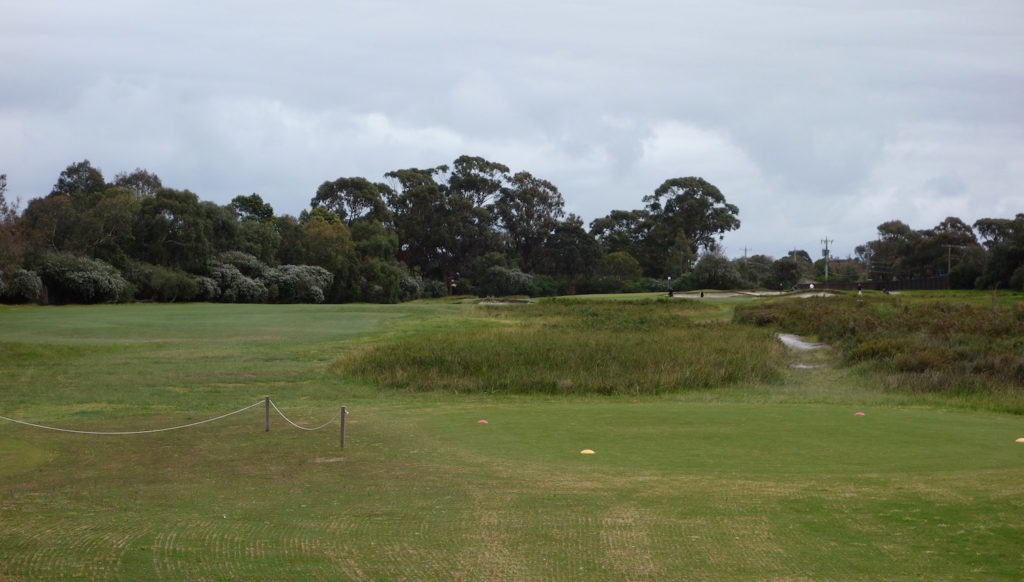

Hole #15 – 477 yards – Bunkering elevates this straight and flat hole to a great par 4 that starts the final stretch on the West Course.
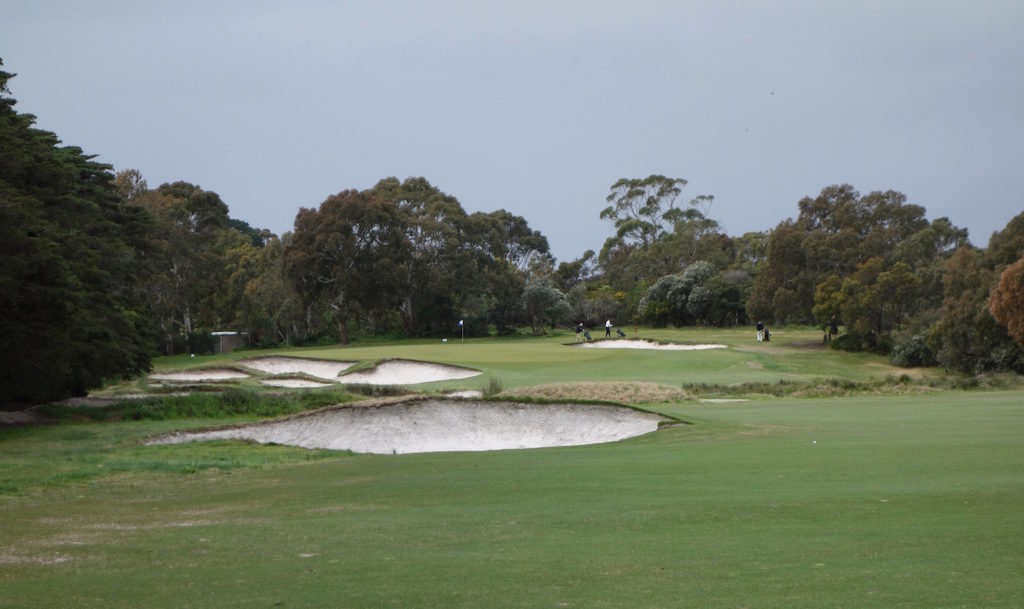
Hole #16 – 221 yards – This par 3 is as visually intimidating as it is long. Much of the bunkering doesn’t actually come into play for a well-struck shot, but it’s an example of artistry in golf course design.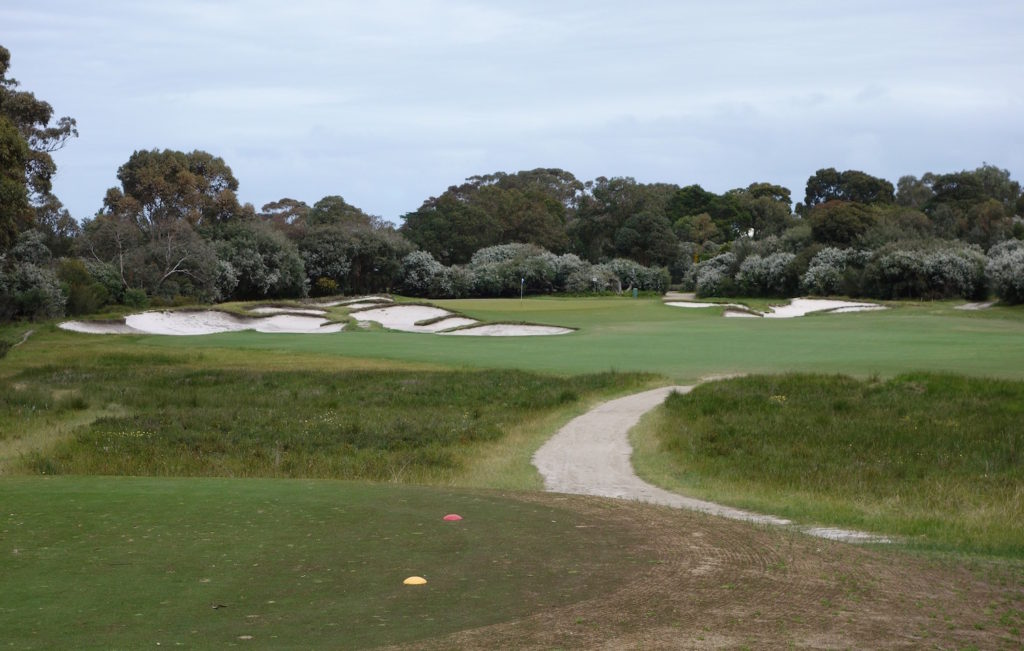
Hole #17 – 439 yards – Err right of the bunkers on the inside of this dogleg left. The green complex is another example of Royal Melbourne genius where players have the option of playing safe out left or flirting with danger and a right pin. The third photo below was taken from behind the green.
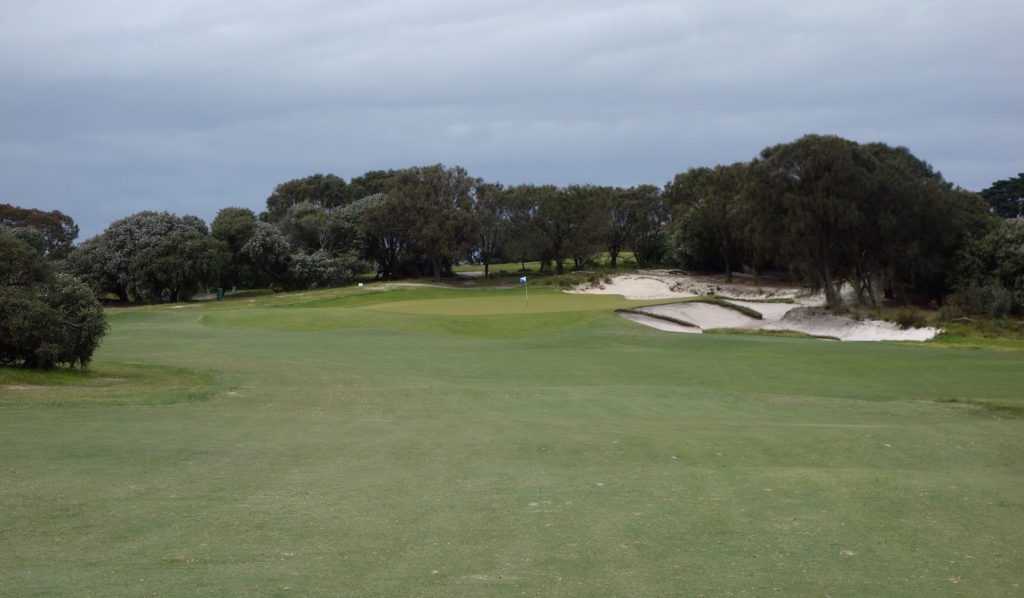
Hole #18 – 433 yards – Mid-to-long hitters can carry the fairway bunker complex on this grand finishing hole. Almost regardless of where the pin is, approach shots have to challenge right bunker short of the green. The bunker may seem out of play, but on a windy day I’m sure it catches more than a few mishit shots.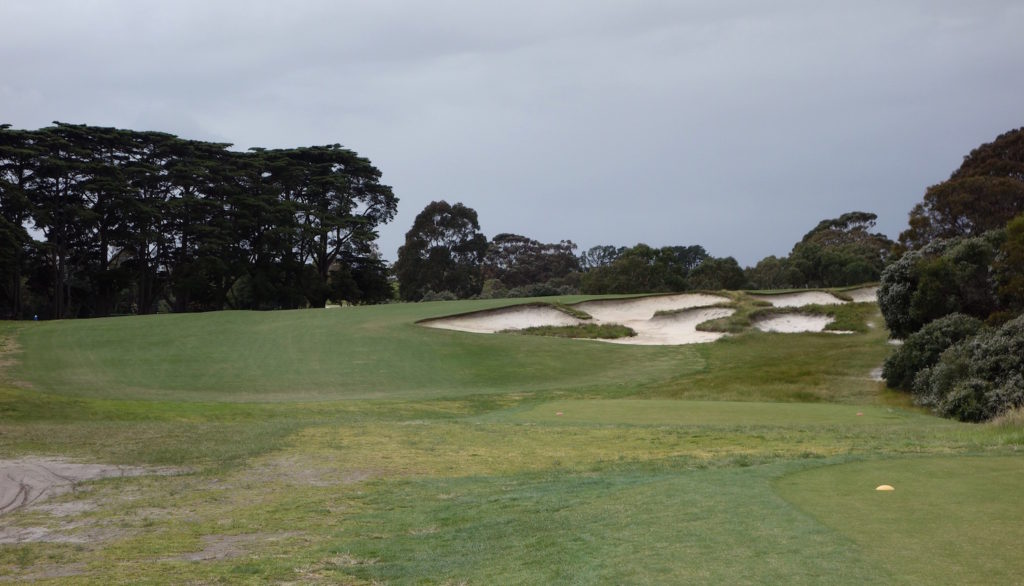
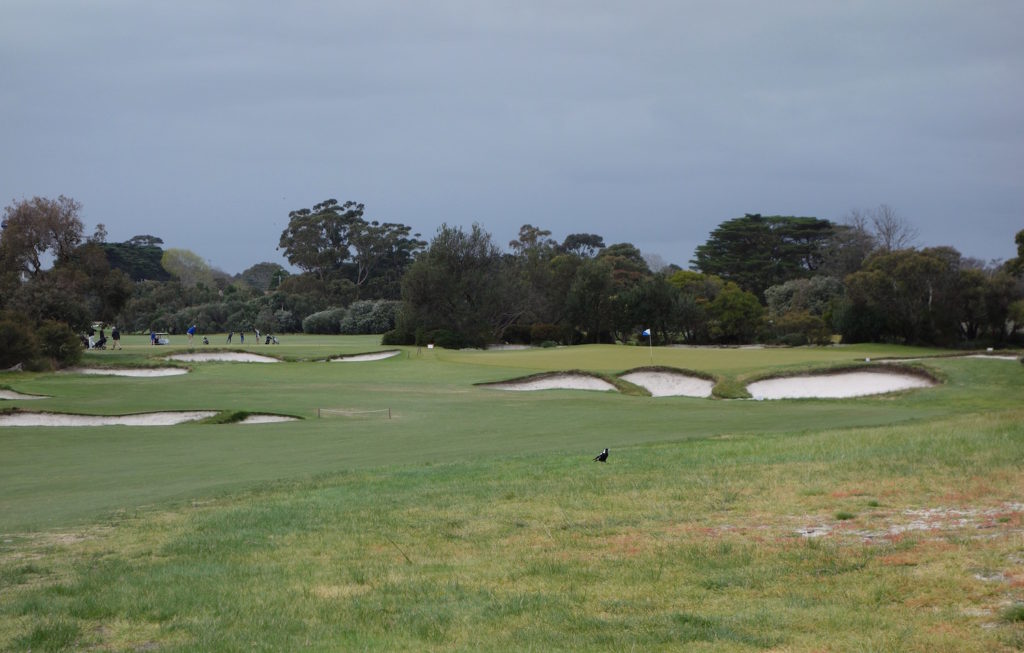
Hole #19 – This extra hole designed by Tom Doak mirrors many of the bunkering characteristics found on both the East and West. That said, the green is very sloping and undulated, almost more so than any you’ll find on either course. The 19th is located directly in front of the clubhouse so there was an audience watching during our round! 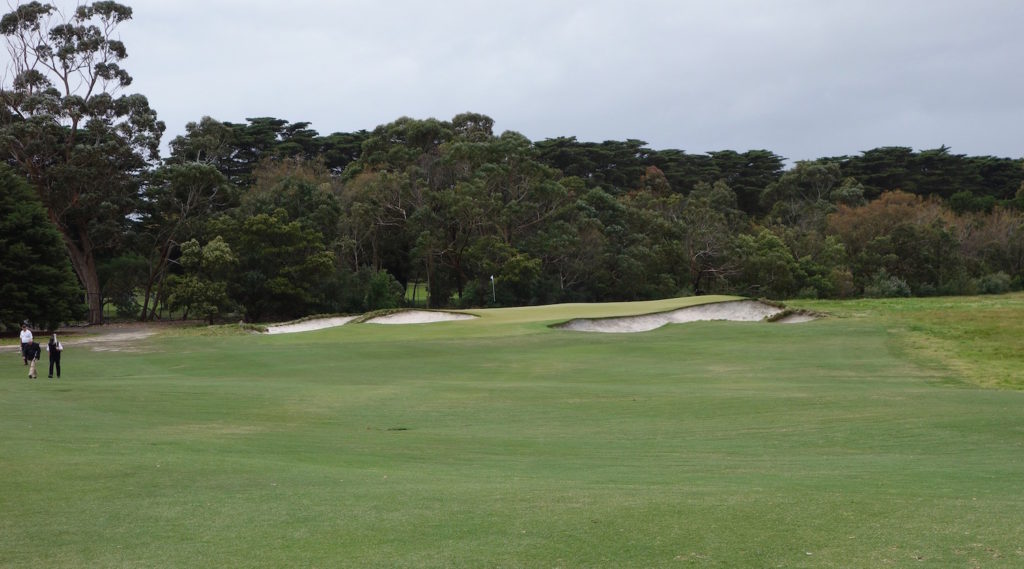
The green complexes at Royal Melbourne were some of the best I’ve ever seen, but it was the way MacKenzie and Russell used the land that stands out as genius on the West Course. The slopes, hills, and general landscape at Royal Melbourne is what sets it makes it the best course in the country and for any fan of golf course architecture, it should be at the top of your course wish list!

